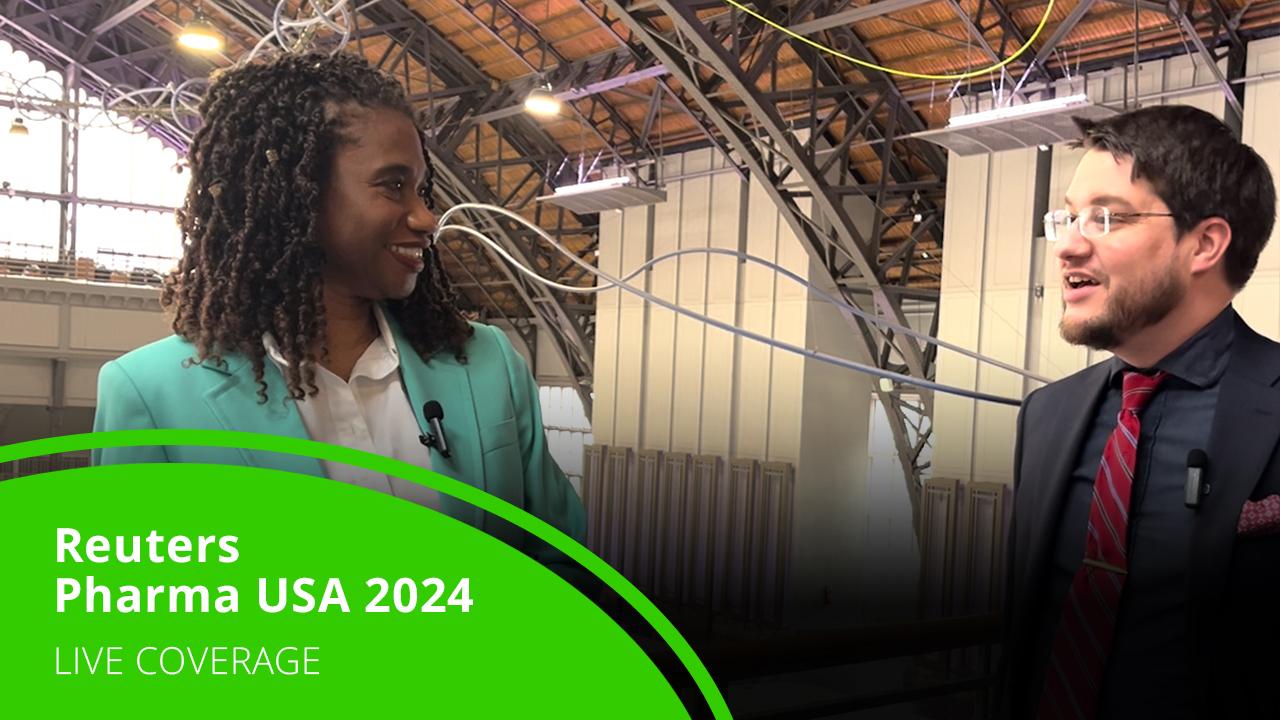Enabling the leaders of the future

Janssen’s Mark Larsen, VP & Head of HR at Janssen EMEA, looks at what COVID-19 has taught us about good leadership and how we develop and enable the leaders of the future.
COVID-19 has amplified what is expected of leaders in workplaces around the world.
From clear communication with an unsettled, dispersed workforce to maintaining positive energy and managing people’s working hours, the need for open, inclusive and empathetic leadership has never been more important.
And now, as countries begin to open up, it’s important to take what we’ve learnt from our recent experience – a period of time that both offered and demanded greater flexibility – and balance that with what our employees and organisations now require and what will best serve our customers.
It will be critical to drive productivity. It will be equally critical to stimulate and reaffirm a sense of belonging for new hires and existing employees alike, many of whom may not even have met in person. And to embed these imperatives into the culture and purpose of a company, we need to enable leaders to have open dialogues, so they can best manage both the evolving concept of workplace and the wellbeing and personal development of their teams.
So, what does good leadership look like in these coming weeks and months, and how can we ensure we are hiring and enabling people to deliver it?
Modelling the benefits of the workplace ecosystem
First off, we need to recognise that workplace no longer means just ‘the office’. Nor does it only mean home. We’ve seen, over the past 18 months or so, that not all work has to be done during core working hours from a single office-based location.[i]
Lockdowns and work-from-home orders quashed office presenteeism. And the ‘workplace’ now emerging needs to be viewed as a broader ecosystem, where the location should best fit the needs of the specific task or interaction involved.
All that said, there remain huge benefits to meeting in person and working together in the same physical location. Those ad-hoc ‘drive-by’ conversations at your colleagues’ desks, creative sessions, team lunches, coffee break chats, and just the overall buzz and energy created by humans being together in one space can inspire innovation, refine thinking, and reinforce a sense of team and collective purpose.[ii]
When revisiting the purpose and design of the office we should not forget that it can also provide an individualised experience. For some, the office building offers quiet space in which to focus and concentrate; an environment that may not be readily available at home. That’s why I strongly believe the office still has a fundamental role to play in any hybrid or more personalised model.
While hybrid working is one thing; hybrid meetings are another. Even with the best tech in the world, having some people in the room and others on a screen can be challenging. It can work more naturally for webinars or bigger, company meetings, but I’ve found it can present issues for smaller groups, where it’s important for everyone to feel involved and be able to contribute equally.
We must be careful that those dialling in don’t fall out of the loop on project status or miss any nuanced shifts or decisions that can occur in the office, once the video conference is ended. And we really must avoid any sense of a ‘two-tiered society’ of employees, where those working remotely feel disconnected or that their performance is not being assessed as completely as those in the office.
We need, in short, to be more strategic and intentional about where we are and what we’re doing. Our focus needs to be on outcomes and results – it’s not about presenteeism, it’s about productivity.
Leaders should be out in front on this. They should drive the discussion beyond just a debate on the merits of a hybrid model, and focus on ways of working that will best support and achieve business priorities. They should lean into flexible systems, and they should, of course, make sure they’re role modelling best practice.
It means creating new lines of communication to ensure everyone is on the same page and feels connected to each other and the business. It means bringing new levels of authentic, positive energy across the ecosystem and inspiring teams to bring their best, every day, wherever they are.
And it means a heightened focus on listening and learning about colleagues’ experiences, adapting to their needs where possible, and supporting their emotional and physical wellness as we navigate this new approach.
Evolving the employee value proposition
While flexible working has always been part of the employee value proposition, the prospect of new workplace ecosystems means people are already placing a much higher value on flexibility as they consider their next role.[iii] It’s no longer just about the company, compensation package and secondary benefits (e.g., gym membership).
Beyond flexibility, people are also expecting a leadership and workplace culture rooted in inclusiveness, adaptability, and continuous learning.[iv] The company must deliver an employee experience that can adjust to employees’ needs and to the shifting world around us.
The company, through its leaders and its employee value proposition, must demonstrate that it trusts its people to use the flexible, adaptable set-up wisely. It’s crucial that everyone is recognised and rewarded based on the contribution they make and the results they deliver.
It’s been said that people join a company because they want to work for that business, but that they often leave because they no longer want to work for their manager.[v]
Leaders should be more instrumental than ever in helping manage the energy and output of their teams. Some leaders inspire and energise; some are unrealistic and draining. We should recognise and develop those leaders who are able to navigate the demands of the business while also sustaining the energy levels of their people.
In a hybrid workplace ecosystem, leaders must adapt to the needs of their employees and, of course, the business. They must demonstrate new ways of connecting, collaborating, inspiring, supporting and listening to colleagues across their company. Because, in doing so, we don’t just improve our current work culture, we guide and enable the leaders of the future.
About the author

Mark Larsen is vice president and head of human resources for Europe, Middle East and Africa (EMEA) at Janssen, the Pharmaceutical Companies of Johnson & Johnson.
Mark is responsible for leading the strategic talent agenda and enhancing the organisational capabilities needed to deliver the business strategy of the EMEA pharmaceuticals division. He joined the company in 2015, moving to the position of head of HR medical devices North America in 2019, before taking up his current role in 2021.
Prior to Johnson & Johnson, Mark held roles of increasing seniority at Philips, becoming head of HR for the ASEAN-Pacific region from 2012 2015. In addition to postings in Dubai and Singapore, he held positions in both the commercial and manufacturing operations that covered regions and countries including the Middle East, Africa, Turkey, India, Benelux and The Netherlands.
Mark holds a master’s degree in Sociology of Labour & Organisations from the University of Amsterdam.
References
[i] Department for Business, Energy & Industrial Strategy. Making Flexible Working the Default. Available at: https://assets.publishing.service.gov.uk/government/uploads/system/uploads/attachment_data/file/1019526/flexible-working-consultation.pdf Last accessed: November 2021.
[ii] Harvard Business Review. Why You May Actually Want to Go Back to the Office. Available at: https://hbr.org/2021/07/why-you-may-actually-want-to-go-back-to-the-office Last accessed: November 2021.
[iii] Business News Daily. Want Top Talent? Give Employees the Flexibility They Seek. Available at: https://www.businessnewsdaily.com/10108-employee-flexibility-recruiting.html Last accessed: November 2021.
[iv] Biz Library. What Do Employees Value Most? Key Factors of Employee Satisfaction. Available at: https://www.bizlibrary.com/blog/organizational-culture/what-do-employees-value-most/ Last accessed: November 2021.
[v] CIO. 9 reasons good employees leave — and how to prevent it. Available at: https://www.cio.com/article/2858746/9-reasons-good-employees-leave-and-how-you-can-prevent-it.html Last accessed: November 2021.













